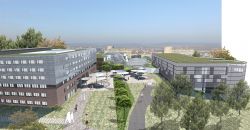In clinics (and other medical facilities e.g. nursing homes) the LSM6 is use to control the lighting in corridors and stairwells, treatment rooms, nursing rooms, operating theatres, laboratories and adjacent to the ward also offices and conference rooms.
Especially in areas for medical use, increased safety requirements have to be complied for the lighting installation. With our light controlling system you can fulfill them easily and economically without using KNX or DALI busses.
Important functions of the LSM6 applicated in medical areas are:
relevant standards:
- DIN VDE 0100-710: 2012-10
- DIN VDE 0100-710 supplement 1: 2014-6
- DIN VDE 0100-0560:2013-10
In compliance with the standards the following requirements result:
- at least 2 different power sources (AV und SV)
- 1 Fail safety -> power-source failure should not lead to a failure of the entire lighting system
- the lights switch alternately from AV to SV on escape routes
- in corridors, stairwells and rooms for medical use group 2, the SV lighting has to be divided in 2 circuits
Technical specifications:

